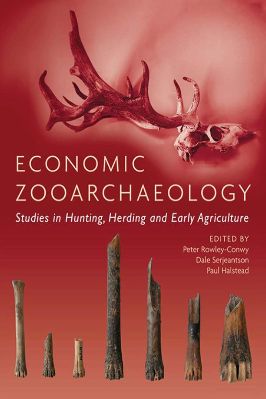
| Economic Zooarchaeology. Studies in Hunting, Herding and Early Agriculture | |
| History | |
| PDF Book | |
| 421 | |
| 24.48 Mb(s) | |
|
|
| October 7, 2023 | |
| English | |
| Read PDF Book Online | |
| Click to Download the PDF |
Economic Zooarchaeology. Studies in Hunting, Herding and Early Agriculture
Title: Economic Zooarchaeology: Studies in Hunting, Herding, and Early Agriculture
Authors: Peter Rowley Conwy, Dale Serjeantson, Paul Halstead
Book Description:
In the captivating world of archaeological exploration, few disciplines are as crucial and revealing as zooarchaeology. “Economic Zooarchaeology: Studies in Hunting, Herding, and Early Agriculture” by the eminent trio of Peter Rowley Conwy, Dale Serjeantson, and Paul Halstead delves deep into the intricate web of human-animal interactions throughout history. This seminal work unravels the rich tapestry of our ancient past through the lens of zooarchaeology, shedding light on the complex relationships between humans and animals that have shaped our civilizations.
Key Themes:
1. Unveiling the Secrets of Prehistoric Diets: Through meticulous analysis of animal remains, the authors offer a vivid glimpse into the diets of our ancestors. From the hunters of the Paleolithic era to the pastoralists of the Neolithic, readers will journey through time to understand how these diverse communities sourced, prepared, and consumed animal resources.
2. The Evolution of Hunting and Herding Practices: “Economic Zooarchaeology” provides a comprehensive account of how humans transitioned from nomadic hunting-gathering lifestyles to settled herding and early agriculture. This transformation is explored in depth, highlighting the impact on society, technology, and the environment.
3. Social and Economic Implications: Beyond mere subsistence, the book delves into the economic, social, and symbolic dimensions of human-animal relationships. The authors demonstrate how the utilization of animals for various purposes—whether as food, tools, or symbols—shaped societies’ structures, ideologies, and worldviews.
4. Multidisciplinary Insights: Drawing on a wealth of archaeological, ecological, and ethnohistorical evidence, “Economic Zooarchaeology” exemplifies the power of interdisciplinary research. The authors engage with diverse scientific disciplines to weave a comprehensive narrative of human-animal interaction, offering readers a holistic understanding of the past.
5. Contemporary Relevance: This book is not only a journey into the past but also a reflection on the present and a guide to the future. It underscores the importance of sustainable resource management, conservation, and ethical considerations in our current relationship with animals and the environment.
Why Read “Economic Zooarchaeology”?
“Economic Zooarchaeology” is a seminal work that will appeal to scholars, students, and anyone with a passion for unraveling the mysteries of the past. It offers a meticulous and engaging exploration of how our ancestors hunted, herded, and farmed, providing valuable insights into the evolution of human societies and their impact on the natural world. This book invites readers to embark on a thrilling journey through time, revealing the profound connections between humans and animals that continue to shape our world today.
Step into the captivating realm of “Economic Zooarchaeology” and discover the untold stories of our ancestors and the animals that walked beside them, shaping the course of history..
Digital screenshot from the PDF Book
To learn more about the book titled: Economic Zooarchaeology. Studies in Hunting, Herding and Early Agriculture, Click the download button below to get it for free
